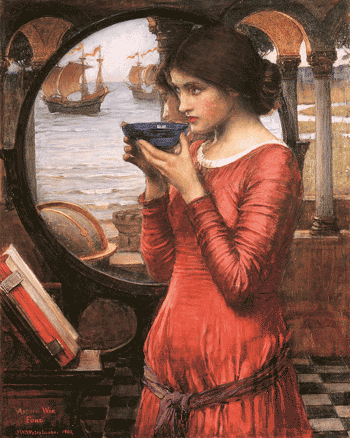Dois filhos do céu, a oriente nascidos, sob o toldo das estrelas e sobre manto da solidão, envoltos em sensibilidade.
Descendentes dos mesmos sonhos, irmãos, e personagens de tragédia, cumprindo o desejo invocado, trazendo a luz a um mundo escuro.
De filhos, a irmãos, de irmãos a pais de uma nação. Criadores de terra, apartir da água, e vida apartir do pó.
Mas dentro do tempo tudo passa, e o pouco que fica se escapa, e assim a morte apartou Azanami de Azanagi.
O deus solitário, só na sua presença e mágoa, jurou romper com as linhas do esboço dirigido do destino, e trazer à vida o que a morte lhe tinha roubado.
Decidido desceu pelo submundo, cada vez mais negro e assustador, em busca de seu amor, procurou e procurou até que o encontrou. Falou-lhe de sua dor, da sua solidão, contou-lhe o egoísmo que a implorava para si.
Azanami, ouvindo o seu coração bater, pela primeira vez desde que morreu para o mundo dos vivos, pediu a Azanagi para esperar, enquanto rogava pela sua forma à ordem que a acorrentava naquele lugar.
Comovido pelo amor dos dois, o destino nada podia argumentar, e deixou a alma ascender à superfície, enquanto o seu corpo regressava da morte.
Azanami conhecendo a natureza mundana de Azanagi, rogou para não a olhar até à luz do sol os cobrisse aos dois.
Ele assentiu ao pedido invulgar, ébrio de alegria, até que a luz entrecortada se assumiu na distância, quando a curiosidade foi mais forte que o seu voto, e olhou para a sua consorte, regresssando da morte, e o amor gelou. Assustado pela visão que os seus olhos lhe davam a ver, fugiu aterrado.
Azanami, destroçada e furiosa, correu atrás de Azanagi para o matar, antes de se escapar das trevas, mas o destino assim não o deixou.
Sem razão de viver, ferida e magoada, Azanami deixou-se ficar só na escuridão, jurando ao outrora seu amor, matar mil dos seus descendentes em cada novo dia, ao qual o deus retorquiu que faria nascer outros mil e quinhentos.
Assim a Morte permeia toda a criação, escolhendo indistintamente os mortos entre os vivos, perpetuando pelos tempos a vingança de um amor.
Dedicado a ti Frankie, na côr que tu tanto adoras, com os votos de que melhores rápidamente, e o teu aniversário seja um dia de mais alegria do que de tristeza. Um momento que abarque nas tuas lágrimas salgadas a alegria do amor.
Jeust


![[Grimoire Weiss]](http://member.square-enix.com/na/features/nier/soundtrack/images/cd_nier.jpg)
.jpg)












![[rosa]](http://beautifulwallpapers.files.wordpress.com/2008/08/red-rose.jpg)
